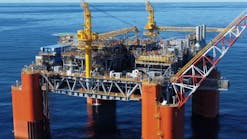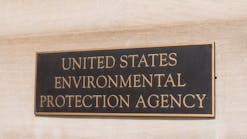Ron LedbetterSubsea technology needs further advances to reduce operational costs before operators will expand the use of subsea well completions in the Gulf of Mexico. They will continue to choose surface completion-oriented systems as long as these are more economical operationally than subsea systems. Designs of subsea equipment such as trees, connectors, control pods, umbilicals, and flow lines, must bring about reductions in the cost of both installation and workover compatibility. Remote operated vehicle (ROV) manipulation is one avenue that should be exploited. The bottom line is that significant cooperation between equipment manufacturers and ROV companies is needed to develop advanced ROV technology, and operators should be involved to help guide operational strategies. The approaches to subsea technology taken to date have not changed operators fears of high subsea intervention costs. Subsea advocates can either take up the challenge and find a better way or sit back and let things continue as they have.
Consultant
Houston
Deep water
The fact that subsea technology is still waiting for its day in the Gulf of Mexico may be connected to the traditional approaches taken in subsea equipment design. As interest has grown for deepwater tracts in the Gulf of Mexico, many producible discoveries have moved off the continental shelf into depths where conventional GOM production systems, bottom supported platforms, are no longer viable. At these depths, the capital expenditures (Capex) of surface completion systems has caught up to and surpassed subsea Capex. It should be the coming of age for subsea technology, the long predicted move to ocean floor completions. As a result of moving into deepwater, a renewed interest in subsea-based floating production systems (FPS) has blossomed as a potential tool for the step into ultradeep water. Enserch Corp.s Gulf of Mexico Garden Banks 388 development in 2,190 ft of water, its upcoming Green Canyon 254 prospect in 3,223 ft of water, and Amoco Orient Petroleum Co.s Liuhua, offshore China, development in 1,000 ft of water are examples of this. Yet the fear of high operating expenditures (Opex) still casts its shadow on subsea well completions. The cost of subsea intervention as we know it and the unknown frequency of these interventions has kept surface completions as the sanctuary of those unwilling to take the risk of subsea completions. Consequently, tension leg platform (TLP) technology has remained as an option for deepwater production despite the high Capex. Shell Offshore Inc.s continued use of TLPs for deepwater developments such as Auger, Mars, and Ram-Powell, and the consideration of TLPs by others, show that some operators feel that tradeoff of a higher Capex for the lower Opex is a sound choice. In addition, new platform concepts such as SPAR have entered the picture in an attempt to lower the Capex for deepwater surface completions. Oryx Energy Co. is building the first GOM SPAR for its Neptune prospect in Viosca Knoll Block 826 to be installed in 1,930 ft of water, and Chevron Corp. is opting for SPAR at its Vancouver prospect in Green Canyon Block 205, water depth of 3,400 ft, because the Capex between the SPAR and subsea is close enough to justify a surface completion approach. Although at this time little is known of actual Capex in terms of construction and installation costs for these new technologies, hopes of keeping the wellhead on the surface remains high.The real question has become: Is technology headed in the right direction or are we avoiding the optimum solution of moving the platform to the seabed?
The problem
The dilemma of choosing between subsea and surface must be condensed down to the real issues. Most of the technical issues must be pushed aside to get to the real driving factors: Capex and Opex. Simply, as well as obviously, capital expenses have two elements: cost of equipment and cost of installation. Operating expenses also have two elements: cost of services and cost of lost production (downtime). It is the tradeoffs between these expenses that are the deciding factors. Capital costs of subsea equipment are still a sensitive issue even in deepwater, and attention should be given to those items of subsea equipment that are recognized as the highest cost items. Production risers, tree connectors, flow line connection systems, and auxiliary control systems are just a few of the items, but some of the most noticeable. Each of these needs drastic reduction in cost to enhance the competitiveness of subsea systems. With current subsea technology, the cost of installation escalates as water depth increases because of extended costs of mobile drilling units (MODUs), specialized installation vessels, specialized flow line and riser connection systems, and nonstandardized riser systems required to do the work. Consequently, logic would say that the focus should be on reducing these costs. However, we are mired in working with the technology that keeps us at the surface. The current trend of subsea technology is to, in a sense, reach down with awkward and expensive tools from the surface. Maybe we need to rethink this philosophy, and consider that we may not be using the right tools. Perhaps, the biggest drawback for subsea technology has been operating expenses because of the cost of well intervention to perform workover and repairs. For example, if drilling and workover capabilities are not part of the production system, the cost of a drilling rig to perform workover operations or retrieval of subsea equipment must be added to subsea Opex. Expensive tools such as nonstandardized workover riser systems, running tools, and workover control systems must be bought or rented. All of these are additional costs for subsea Opex.Wrong solutions
Many of the approaches to subsea technology are of the same thinking as that of surface completion thinking: Extend the surface platform by building tools that let us reach down from the surface instead of working from the seafloor. Amocos Liuhua 11-1 is an example of a subsea system that is so equipment and support system intense that Amoco is now considering SPAR and TLP-based systems for its Marlin prospect in the Gulf of Mexicos Viosca Knoll region. Enserch has been heralded for its low cost subsea system being installed in Garden Banks Block 388 for the estimated cost range of $400 million. This is made particularly significant with the Auger development, similar in production capability at $1.8 billion, just a few miles away. However, even the GB 388 development might have realized additional reductions in Capex, and certainly reductions in Opex, with a less traditional approach to support systems such as installation and workover tooling. The ultradeep water prospects are without a doubt beyond diver depths, and we are not to the technological point of having an atmospheric working environment on the seafloor. However, we do have tools that allow us to work robotically at the seafloor.The question is, are we putting the technological effort in the right place? Perhaps instead of trying to improve surface-oriented tools we should put more effort into developing subsea-oriented tools such as ROVs for services that the current reach down tools perform. This effort, however, needs to extend beyond the ROV itself to the equipment installed on the seabed. What will precipitate from this will be overall reduction in equipment cost, installation cost and, ultimately, operating expenses. Instead of trying to reduce installation and workover costs by finding less expensive installation/workover systems or renting the equipment, why not eliminate these costs altogether? Why not avoid the cost of a MODU to workover or retrieve subsea equipment? If the deciding factor between surface and subsea completions is Opex, reduction of subsea well Opex is the key to increasing the use of subsea technology.
Paradigm shift
If we hold onto the paradigm that ROVs can only be used for observation or occasional manual intervention, subsea equipment will remain tied to surface attitudes. ROVs can be the next step in moving production operations subsea and reducing subsea installation and operation costs. But ROVs and subsea equipment must be matched for this idea to be workable. Already those who believe that subsea-oriented tools are the path to reducing both capital and operational costs have begun to develop concepts that could secure subsea technology at the forefront of deepwater development. A paradigm shift is taking place because these new concepts are a complete departure from existing configurations. These ideas, however, may be too revolutionary for acceptance, or they may require more cooperation than subsea proponents are willing to give. For example, if a subsea tree were configured to be run on wire line and be installed by an ROV, the need for installation risers and installation control systems would disappear. Fig. 1 (98834) shows a tree being run on a workover or completion riser. An ROV has docked itself on the side of the tree and can locate acoustic targets on the guidebase to dynamically position the tree over the center line of the wellhead. If the tree were run on wire line instead of a riser system, the ROV would also provide rotational orientation to the tree. As soon as the tree was landed, the ROV would make up a manually operated simple clamp-type connector or hydraulically lock a collet-type connector to the wellhead. This system would use power and controls within the ROV to eliminate the need for additional remote controls to land and lock the tree on the wellhead. The costs of the traditional workover control system can be eliminated by using an ROV to control workover functions. By interfacing the tree through the control pod as shown in Fig. 2 (93585 bytes), or directly at the control pod baseplate, control signals can be sent to the workover functions via the ROV control station on the surface. In this figure, the ROV has moved to the control pod baseplate to install the control pod. The control pod baseplate, the umbilical/pod plate, and the tree interface are standardized API ROV profiles for universal interface compatibility. An idea that has long been rejected because of size and weight incompatibility, is that subsea control system components such as control pods and umbilical connections could be ROV installed and retrieved.Traditional design approaches would have to be put aside and totally new concepts would need to be developed such as interconnected modular valve plates instead of the standard heavy single piece machined baseplate. ROV control systems have used this approach effectively for some time. Fig. 3 (92205 bytes) shows a concept where the control pod is configured in an ROV- compatible package small enough and with enough floatation to make it easily manipulated. Fig. 4 (59034 bytes) is an example of how the overall control pod and umbilical connection systems might be configured. The interfaces for the pod baseplate, the rear of the control pod, and the rear of the umbilical connector are standardized to the ROV profiles in API 17D. The ROV has a belly-skid tool package with the mating ROV profile to engage all of these interfaces. This offers complete flexibility for installation and retrieval of subsea components. ROV-connected flow lines and risers is a concept that already has some equipment in place. Exxon Corp.s DMAC system is an ROV-based flow line connection system, for example, and the use of flexible pipe is promoting other design concepts as well. Amoco will use Sonsub Inc.s ROV diverless flow line connection system (DFCS) for its Liuhua flow line subsea connections (2 x 13.5 in. and 1 x 6 in.). In Fig. 5 (148624 bytes), another Sonsub DFCS is shown using an ROV to make up a flow line connection. This approach uses a simple pull-in operation and requires little equipment. Fig. 5 (148624 bytes) shows the sequential steps of a flow line connection where the ROV connects a winch line to the guidebase connection and then flies out to pick up the flow line with a belly-skid package that matches a pull-in sleeve on the flexible pipe. The ROV then winches in the flow line end, mates the hubs and makes up a simple mechanical connector. The ROV then tests the seal at the end of the connection sequence. Other concepts ready for development and application are ROV retrievable chokes mounted in the tree cap as shown in Fig. 2 (93585 bytes), ROV retrievable tree gate valves, and ROV repair of flow lines and pipelines. All employ tools designed to be the operators interface on the sea floor. The key here is to use tools that allow operators to work at the subsea location and provide equipment compatibility. These ideas are for the most part specific mechanical concepts, and additional work is needed to develop the technology fully as well as generate operational plans to support all types of subsea intervention. Some examples of areas needing attention are paraffin scraping, downhole safety valve service, and tubing service. Much of this requires not only technical innovation but cooperation between subsea equipment suppliers to develop compatible equipment and procedures.
Acknowledgment
The figures in this article were provided through the courtesy of Radoil Tool Co. Inc., Houston, and Sonsub Inc., Houston.The Author
Ron Ledbetter is an independent consultant in Houston. He has over 20 years of experience with subsea production systems. Ledbetter holds a BS in engineering from Texas A & M University.All Rights Reserved.



